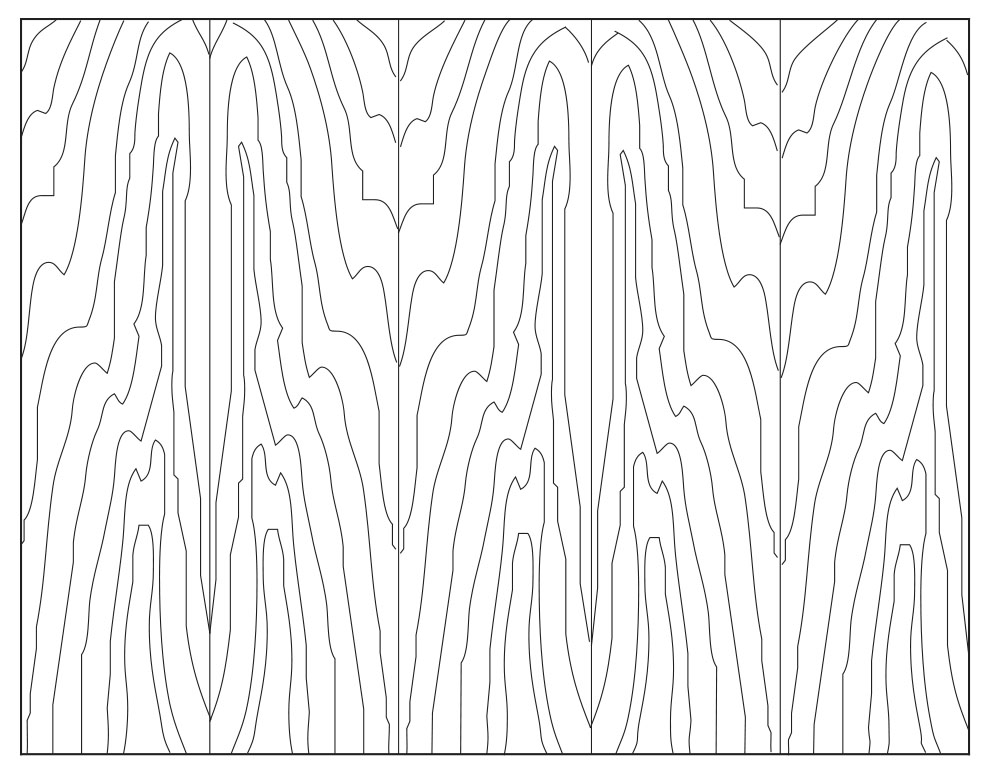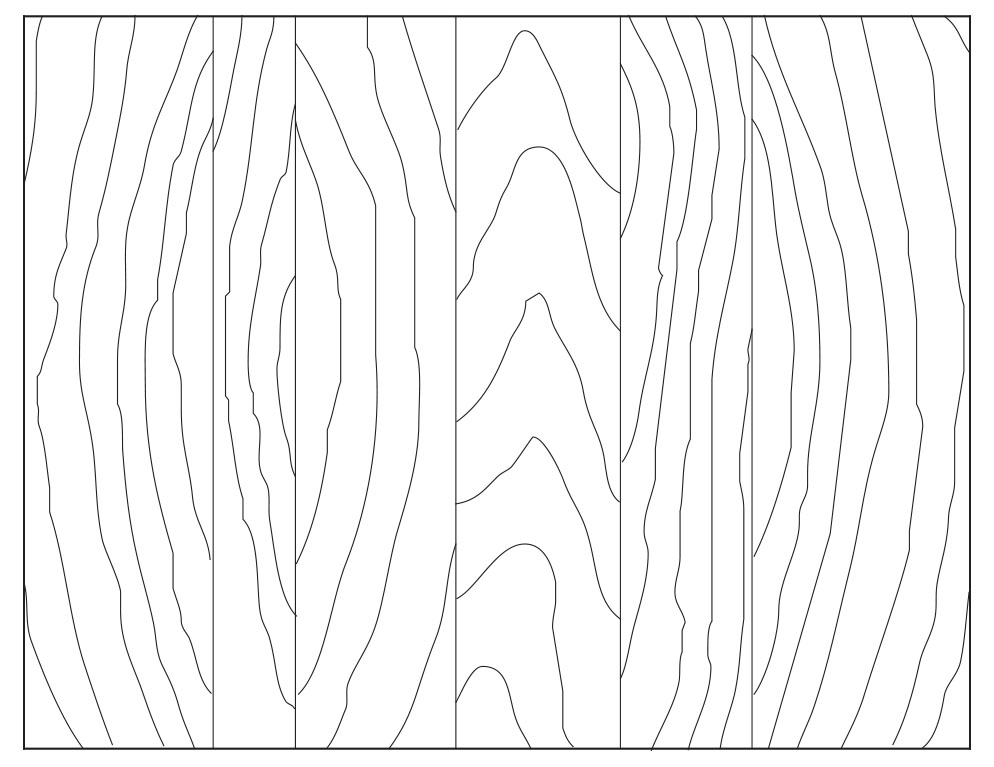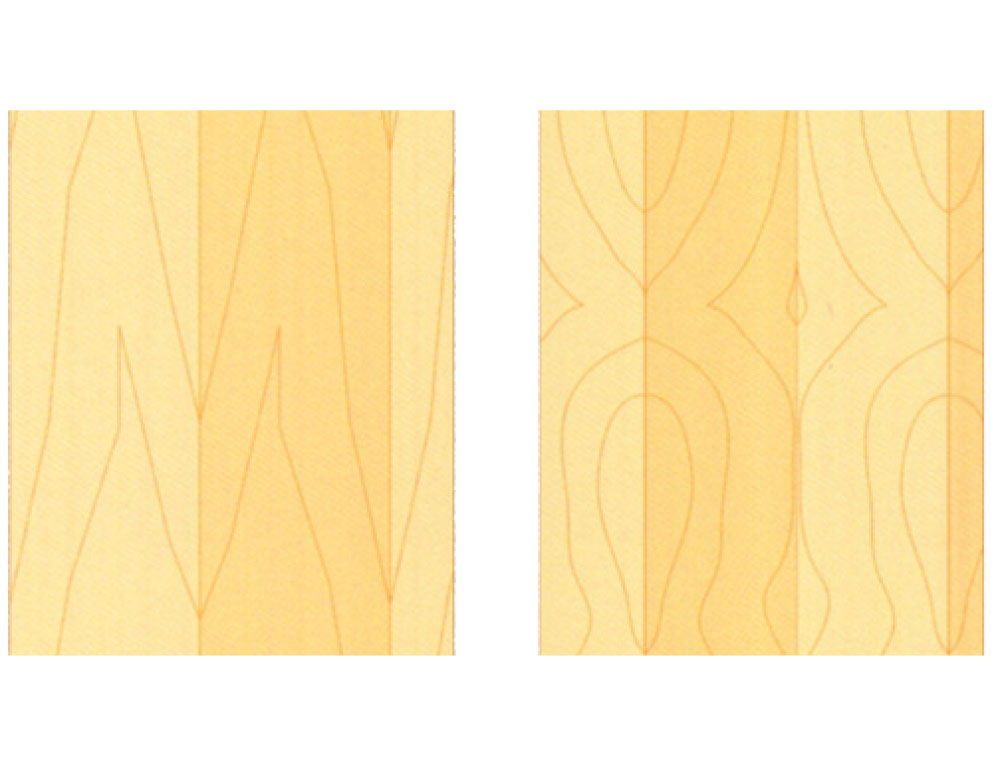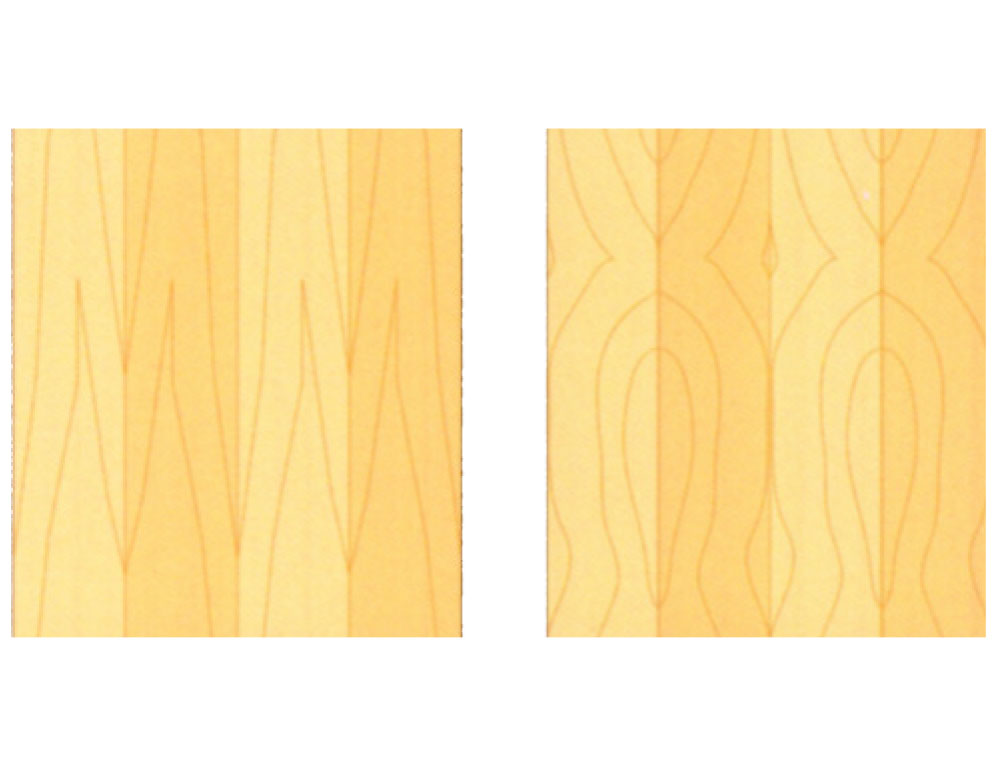Veneer 101
Veneer Cuts
When cutting a log into veneer leaves, the direction of cut as well as the annual rings will determine the look of each flitch. The four most common cut types are as follows:

Plain Slice
(Also referred to as “Flat Cut”) This cut is achieved by sawing the log into two halves lengthwise, then slicing parallel to the line through the center of the log. This results in a cathedral and straight grain combination of patterning

Quarter Slice
This cut is achieved by cutting the log into 4 equal quarters lengthwise. Each quarter is then sliced at a perpendicular angle to the annual rings. The result is a clean vertical striping of various density and thickness for most species, with the exception of oak.

Rift Slice
The most commonly utilized slicing method for Oak, the cutting process begins in the same as Quartered Cut by cutting the log into 4 equal sections. The quartered sections are then sliced at a 45 degree angle. The final appearance is a consistent vertical striping that minimizes the flake characteristic (in Oak).

Rotary Slice
This cut is achieved by mounting the log on a lathe and slicing the log against the blade in an almost continuous role. The final appearance can have a variety of appearances and the inconsistency can make it challenging to Book and/or Slip Match.
Veneer Matching
The order and direction in which the leaves of each flitch are arranged can alter the appearance of your installation. A panel is created by edge gluing individual leaves together to create a pattern. This pattern is defined by the chosen match. (detailed below) Due to the variance in component widths as well as design intent, specifying a match is very important.

Book Matching
The most common veneer matching method, a book match is created by flipping consecutive leaves over like the pages of a book. The result is a more centered/symmetrical look.

Slip Matching
Veneer leaves are stitched continuously without flipping the leaves or patterning. If the grain is straight, the joints will not be apparent.

Random Matching
Similar colored and grained veneer leaves are randomly stitched together to make a pleasing/random match. This match is different from both book or slip matching and typically takes additional labor.

End Matching
Used to extend the length of veneers when added length is required. Individual leaves are matched end to end with the following two leaves in sequence matching side by side. Both book or slip match can be utilized.
Panel Matching

Running Matching
Can be both slip or book matched. However it is non-symmetrical in appearance. Veneer leaves of unequal widths are used. It produces a match which appears less even or random and asymmetrical.

Balance Matching
A matching method that has a symmetrical appearance. Each veneer face is assembled from an even or odd number of leaves that are the same width before trimming. This is a much more pleasing appearance compared to Running Match.

Balance & Center Matching
The most aesthetically pleasing and symmetrical matching method. Each veneer face is assembled from an even number of leaves that are the same width before trimming. The veneer waste yield is the least optimal with this match.
